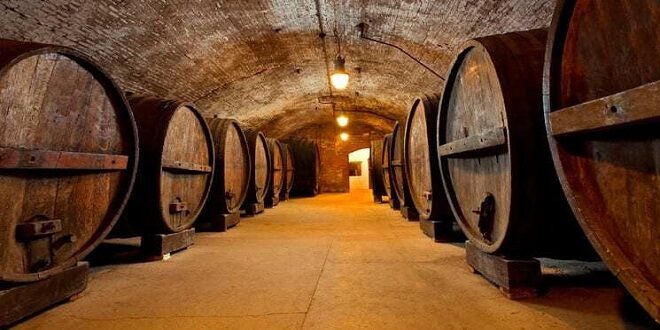Introduction
Grape wine is wine produced by the normal alcoholic fermentation of the juice of sound, ripe grapes (including restored or unrestored pure condensed grape must), with or without the addition, after fermentation, of pure condensed grape, must, and with or without added grape brandy or alcohol, but without other addition or abstraction except as may occur in cellar treatment, provided that the product may be ameliorated before, during, or after fermentation by either of the following methods.
(i) By adding, separately or in combination, dry sugar or such an amount of sugar and water solution as will not increase the volume of the resulting product more than 35%, but in no event should any product so ameliorated have an alcoholic content derived by fermentation, of more than 13% by volume, or natural acid content, if water has been added, of less than 5 parts per thousand, or a total solids content of more than 22 g per 100 cm3.
(ii) By adding, separately or in combination, not more than 20% by weight of dry sugar or not more than 10% by weight of water.
(iii) In the case of domestic wine, in accordance with the U.S. Codes.
(iv) The maximum volatile acidity, calculated as acetic acid and exclusive of sulfur dioxide, is 0.14 g per 100 mL (20°C) for natural red wine and 0.12 g per 100 mL (20°C) for other grape wine, provided that the maximum volatile acidity for wine produced fromunameliorated juice of 28°Brix or more is 0.17 g per 100 mL for red wine and 0.15 g per 100 mL for white wine. Grape wine deriving its characteristic color or lack of color from the presence or absence of the red coloring matter of the skins, juice, or pulp of grapes may be designated as “red wine,” “pink (or rose) wine,” “amber wine,” or “white wine” as the case may be. Any grape wine containing no added grape brandy or alcohol may be further designated as “natural.
2 also be designated as “light wine,” “red table wine,” “light white wine,” “sweet table wine,” and so forth, as the case may be. 3. Dessert wine is grape wine having an alcoholic content in excess of 14% but not in excess of 24% by volume. Dessert wine having the taste, aroma, and characteristics generally attributed to sherry and alcoholic content, derived in part from added grape brandy or alcohol, of not less than 17% by volume, may be designated as “sherry.
” Dessert wines having the taste, aroma, and characteristics generally attributed to angelica, Madeira, muscatel, and port and alcoholic content, derived in part from added grape brandy or alcohol, of not less than 18% by volume may be designated as “angelica,” “Madeira,” “muscatel,” or “port,” respectively.
Last word
Dessert wines have the taste, aroma, and characteristics generally attributed to any of the previously mentioned products and an alcoholic content, derived in part from added grape brandy or alcohol, in excess of 14% by volume but, in the case of sherry, less than 17% or, in other cases, less than 18% by volume, may be designated as “light sherry,” “light angelica,” “light Madeira,” “light muscatel,” or “light port,” respectively.
 TRUTHREVIEWERS
TRUTHREVIEWERS
